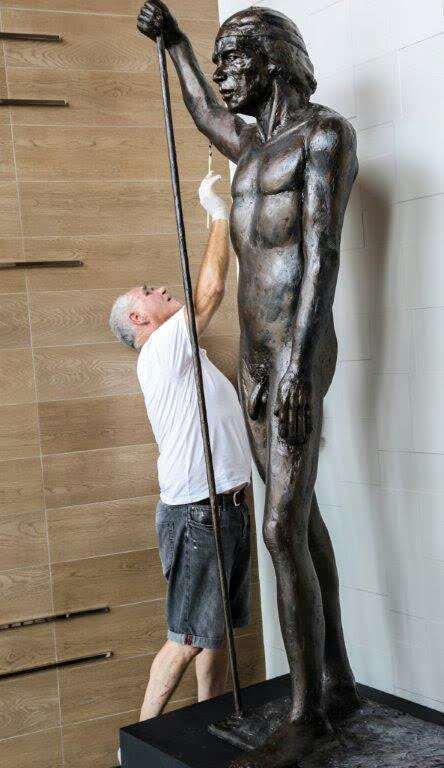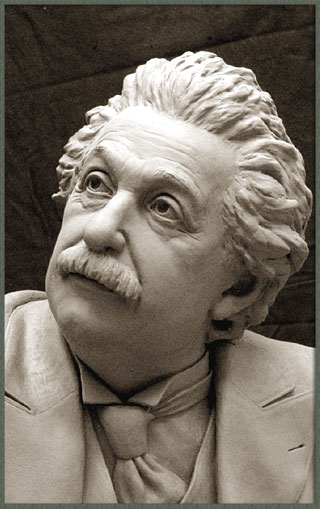The Evolution of Sculptures: From Ancient to Modern
The Advancement of Sculptures: From Old to Modern.
Sculpture, among the oldest forms of art, has actually been an essential component of human world for millennia (Bronze Sculptures). From the ancient people of Egypt and Greece to the modern-day age, sculptures have advanced, reflecting adjustments in creative methods, materials, and social influences. This journey with time traces the advancement of sculptures, checking out the changes in vogue, subject, and creative expression
Beginning with the old world, sculptures crafted from stone and later bronze caught the significance of deities, leaders, and day-to-day life. The Renaissance period observed a revival of classic sculpting techniques, as artists sought to imitate the graceful kinds of old Greek and Roman sculptures. In the contemporary era, musicians tested standard boundaries, accepting abstraction and testing with new products.

This exploration will explore the varied advancement of sculptures, disclosing the rich tapestry of imaginative expression across various periods and societies.
Old Sculptures: From Stone to Bronze
Old sculptures transitioned from being sculpted out of rock to being cast in bronze. Stone sculptures, while excellent in their very own right, were limited by the nature of the material.
The introduction of bronze as a medium for sculptures produced a transformation in artistic expression. Bronze provided sculptors the possibility to produce detailed and natural forms that were not feasible with stone. The procedure of casting bronze permitted the production of numerous copies of a sculpture, enabling bigger distribution and conservation of these creative masterpieces.
The change from stone to bronze additionally saw a change in the subject issue of sculptures. While rock sculptures mostly depicted gods, sirens, and mythological figures, bronze sculptures started to mirror a wider range of subjects, including day-to-day individuals and animals. This development of subject matter showcased the flexibility and versatility of the bronze medium.
Renaissance Revival: Forming in the Classic Design
The Renaissance revival of sculpture saw a resurgence in the classical design, building upon the developments made throughout the change from rock to bronze in old sculptures. During this duration, musicians sought to recreate the timeless aesthetic and perfects of appeal that were widespread in old Greek and Roman sculptures.
One of the crucial features of the Renaissance revival was the emphasis on naturalism and the human type. Sculptors like Donatello and Michelangelo strove to capture the physiological information and expressions of their subjects with unprecedented precision. They studied the human body and included their monitorings into their sculptures, causing lifelike and practical depictions.
One more vital element of the Renaissance resurgence was the expedition of point of view and deepness. Artists utilized strategies such as contrapposto, where the weight of the body is shifted away, creating a feeling of activity and dynamism. They additionally try out different materials, consisting of marble and bronze, to attain a level of refinement and complexity in their sculptures.
The classic style of the Renaissance revival had a profound impact on later durations of art, offering as a foundation for the growth of Western sculpture. It brought a restored gratitude for the beauty and grandeur of the human type, and its legacy can still be seen in contemporary sculptures today.
Modernism and the Avant-Garde: Damaging Typical Borders

Among the vital qualities of modernist sculpture was the focus on abstraction. Artists relocated away from sensible depictions and instead focused on capturing the significance of the subject via streamlined kinds and geometric shapes. This departure from standard depiction permitted artists to share their emotions and concepts in an extra personal and subjective way.
In addition, the progressive motion challenged social standards and conventions, motivating artists to experiment and press the boundaries of their art - Portrait Sculptor. Artists began incorporating unusual products such as discovered items, commercial materials, and also natural components into their job. This exploration of brand-new products and techniques not just broadened the possibilities for sculpture yet also challenged the conventional notions of what can be considered art
Contemporary Sculptures: Checking Out New Products and Concepts
With a concentrate on discovering brand-new materials and ideas, contemporary sculptures have changed the area of art. Artists today are pushing the boundaries of traditional sculpture by utilizing innovative materials and experimenting with abstract ideas. These sculptures challenge conventional concepts of content kind, materiality, and significance, inviting customers to participate in a thought-provoking and brand-new imaginative experience.
Contemporary sculptors are welcoming a wide variety of products, including plastic, glass, steel, and even organic matter. Portrait Sculptor. They are not restricted to the conventional tool of stone or clay, enabling better freedom of speech and experimentation. This change towards unconventional materials has actually opened up brand-new possibilities for artists to create sculptures that are vibrant, interactive, and aesthetically striking
Along with discovering brand-new materials, contemporary sculptures additionally dig right into facility and abstract concepts. Artists are currently discovering themes such as identity, social concerns, and the environment, utilizing sculpture as an effective tool for social discourse and introspection. These sculptures challenge viewers to think seriously and engage with art on a deeper degree, stimulating conversations and prompting emotional responses.
International Impacts: Sculptural Traditions From All Over The World

In ancient Egypt, sculptures were produced mostly for funerary and spiritual functions. The renowned sculptures of gods and pharaohs, such as the Great Sphinx and the breast of Queen Nefertiti, display the Egyptians' proficiency of stone carving and their belief in the immortality.
In ancient Greece, sculpture reached its top throughout the timeless duration. Influenced by the perfects of percentage, harmony, and appeal, Greek sculptures emphasized the human form and commemorated the success of gods, professional athletes, and heroes. The renowned sculptures of Aphrodite of Knidos and the Discobolus exemplify the Greeks' quest of excellence in sculptural art.
In old Rome, sculpture served both political and creative functions. Portrait Sculptor. Roman sculptures often shown emperors, generals, and mythical figures, mirroring the power and majesty of the realm. The marble statuary of Augustus of Prima Porta and the monumental Arc of Constantine are significant examples of Roman sculptural accomplishments
Asian sculptural traditions, especially in India, China, and Japan, have additionally had a profound influence on the development of sculptures. Indian sculptures, such as the intricately sculpted holy places of Khajuraho and the gigantic statues of Buddha, display an abundant blend of religious, mythical, and architectural aspects. Chinese sculptures, characterized by their fine craftsmanship and attention to detail, often depict divine beings, pets, and famous figures. Japanese sculptures, affected by Buddhism, stress simpleness and harmony, seen in the tranquil sculptures of Buddha and the stylish art of bonsai.
The international influences on sculpture proceed to advance in the modern period. Artists today draw motivation from different sculptural practices, integrating brand-new materials, strategies, and ideas to produce ingenious and thought-provoking artworks. The fusion of different social impacts has provided surge to a dynamic and diverse sculptural landscape, mirroring the interconnectedness of our international society. As we seek to the future, it is specific that the worldwide influences on sculpture will certainly proceed to form and redefine this old art kind.
Final Thought
Finally, the advancement of sculptures has seen a shift from ancient stone and bronze works to the classical resurgence throughout the Renaissance. This was followed by the breaking of standard boundaries with modernism and the avant-garde movement. Today, modern sculptures discover new materials and concepts, while likewise attracting ideas from international sculptural traditions. The journey of sculptures mirrors the ever-changing imaginative expressions and social influences throughout background.
From the old human beings of Egypt and Greece to the contemporary age, sculptures have advanced, showing modifications in imaginative methods, materials, and cultural influences.Beginning with the old world, sculptures crafted from stone and later on bronze captured the significance of divine beings, rulers, and day-to-day life.Old sculptures transitioned from being carved out of rock to being cast in bronze. While rock sculptures mainly depicted gods, goddesses, and mythical figures, bronze sculptures started to mirror a broader range of subjects, consisting of day-to-day people and pets.In conclusion, the development of sculptures has seen a shift from old rock and bronze functions to the timeless resurgence during the Renaissance.